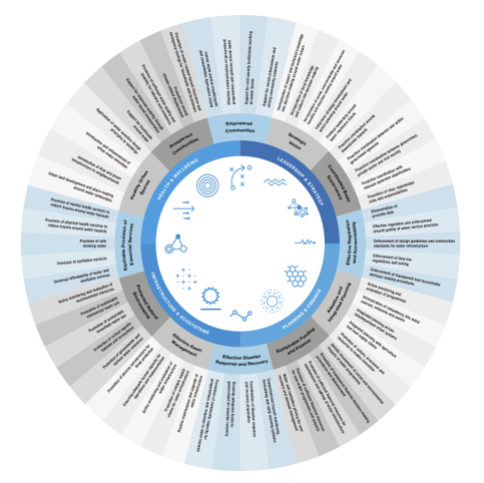Water is a fundamental and unique resource necessary for survival in nature and the development of human settlements. Within cities, water provides a series of tangible and intangible services to citizens, including drinking, sanitation, hygiene and amenity. Water interacts with other urban systems and infrastructure (e.g. flooding of roads, buildings) and includes a variety of possible uses (drinking and wastewater, blue-green infrastructure). In this perspective, water can improve or impair livelihoods.
The City Water Resilience Assessment (CWRA) provides a useful guide for cities to understand water from a systemic perspective (including water sources, treatment options, pipelines networks and management practices, types of uses, but also resilience to a changing climate). As a result, the CWRA can support stakeholders identify measures for Sustainable Water Management through relevant urban policies and interventions (e.g. Water Sensitive Urban Design). For instance, storm water could become an additional resource through its integration in NBS, rather than a problem to be quickly eliminated from the (drained) city.

The City Water Resilience Framework presented in the City Water Resilience Approach
The City Water Resilience Assessment inevitably needs to be contextualized, identifying the scale and the elements which are part of the water systems (i.e. urban rivers, canals, ponds, swales, ground water, and pipelines). The CWRA should be seen as process of analysis and not as a tool for generating results. Yet, modelling tools are necessary to produce quantitative results that can provide the evidence base required for informed decisions/assessments as part of CWRA. To this end, the successful application of the CWRA requires the successful engagement of local experts, stakeholders and communities.
Comments ()